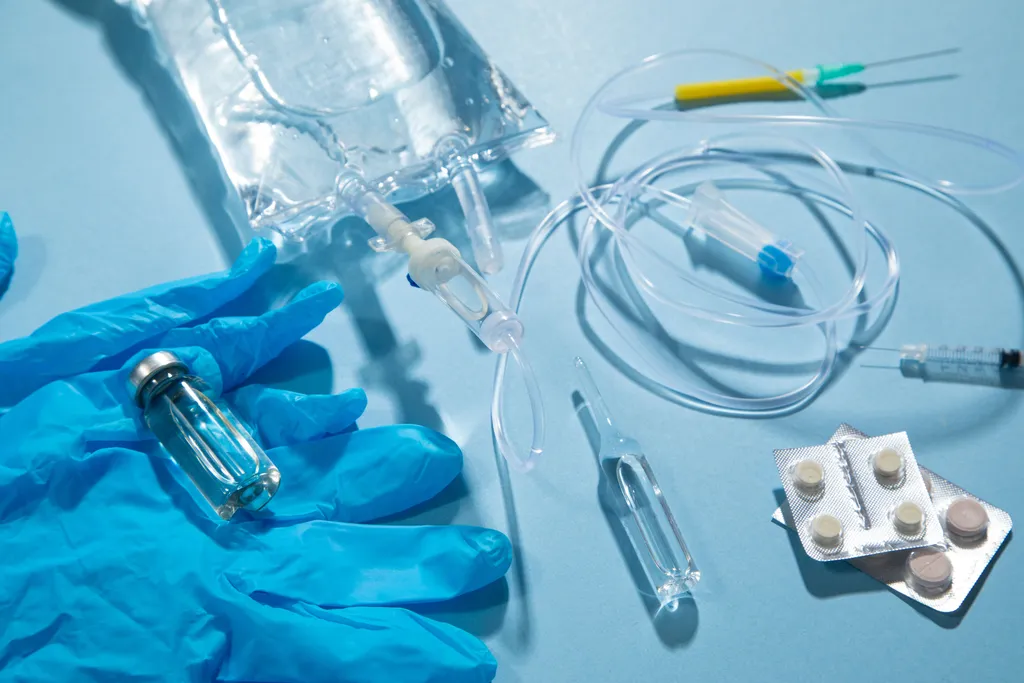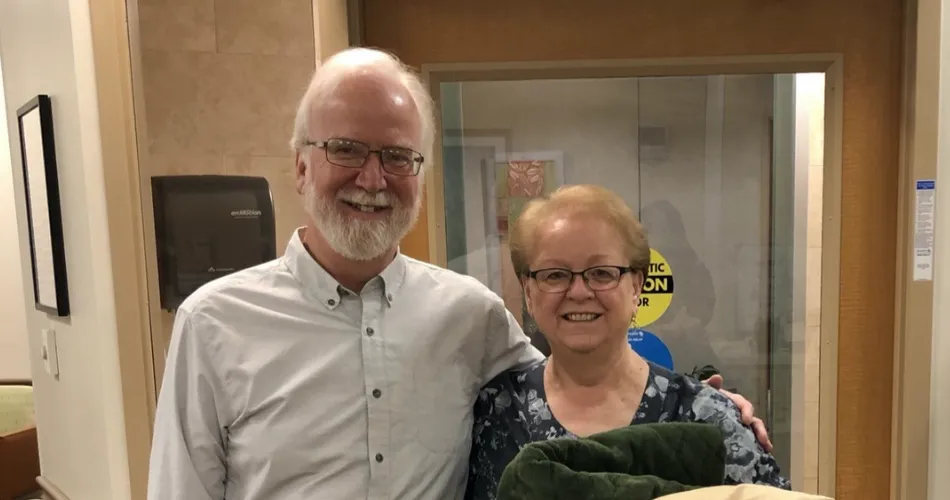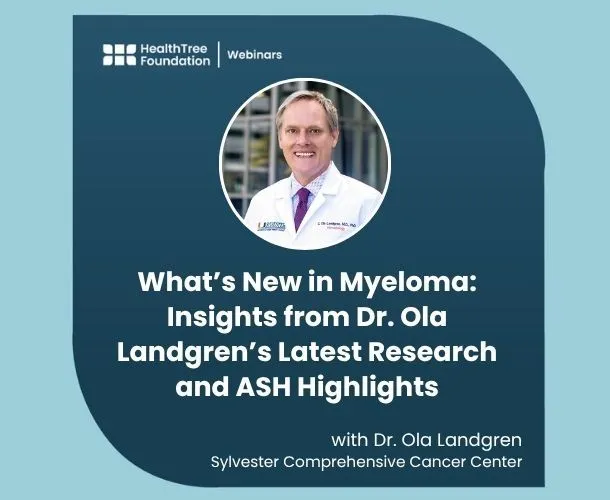ASH 2021: In Iceland, the Value of Screening and Early Treatment Comes Into Focus

“We have been really impressed by these individuals who are willing to participate…some have quit, but the number is very low…these people are just really willing to contribute to science.”
Dr. Sigrun Thorsteinsdottir about iStoppMM study participants
Improving methods of identifying and treating high-risk smoldering myeloma (SMM) may move some treatments to earlier lines of therapy for all patients, in part because there may be more SMM patients than had been estimated. These were just two of the findings in separate updates on the iStopMM (Iceland Screens Treats or Prevents Multiple Myeloma) study at the recent American Society of Hematology meeting in Atlanta, GA.
“Three years of follow-up screening identifies significantly higher numbers of individuals with” active myeloma or smoldering myeloma than expected. The researchers from the University of Iceland also found “the prevalence of SMM is 0.5% in persons 40 years or older [and approximately] one third…have an intermediate or high risk of progression to” active myeloma. Identifying myeloma precursors in blood samples leads to earlier “detection and intervention” of positive cases and “is achievable” in large populations.
Despite these findings, these are still research, not clinical issues yet. Researchers cautioned against over-interpreting the results and advised again “systematic MGUS (monoclonal gammopathy of undetermined significance) screening in healthy individuals.”
The iStopMM study update was among the most anticipated ASH presentations of myeloma experts. It asks questions like: What if we did population-wide screening to identify individuals at the SMM stage? Similar to how we screen for some other cancers? Would it make a difference? Given the depth and duration of national Icelandic data available to researchers, many more questions are expected to be asked and answered in the coming years.
“The trigger for the iStopMM project,” according to study leader Dr. Sigurdur Kristinsson, is the fact that “if you have a myeloma that has been followed [by a] MGUS diagnosis before they get myeloma, they actually have a superior outcome compared to myeloma patients that ‘turn up’” or are diagnosed “incidentally” during other procedures or tests, “without knowledge of their MGUS.”
These patients monitored from precursor stages tend to have “less fractures, less kidney disease, less hypercalcemia, and superior myeloma survival,” noted Dr. Kristinsson, but “about five percent of them are identified at the precursor stage. So we can identify them either by chance or by screening” noting that right now “only a small minority of myeloma patients are diagnosed” this way.
Of course, there is the larger question that comes up if the answer is: Yes! Is it feasible on a larger scale?
A total of 75,422 of the 148,704 who were offered the screening accepted it, reported Dr. Sigrun Thorsteinsdotter, currently a hematologist-in-training in Copenhagen. Of those, 180 were diagnosed with smoldering myeloma.
“Smoldering myeloma is a very important stage of myeloma disease right now,” said Dr. Thorsteinsdottir, “because we have some evidence that indicates that treatment should be started at the smoldering stage.”
Using the Mayo Clinic’s 2/20/20 standard, of the study participants who where diagnosed with SMM, 116 were considered low-, 47 intermediate-, and 17 high-risk. A total of 108 males, ages ranging from 44-92, were diagnosed.
All “were screened for M-protein and abnormal free light chain ratio.” Of the 3,725 who were found to have “abnormal screening”, the study randomized them into three groups, “bone marrow sampling was performed in 1,503 individuals. Twenty-eight were diagnosed with myeloma and began active treatment, some before they were randomized.
Citing a previous SMM study that showed better survival statistics for high-risk SMM patients treated with Rd (lenalidomide plus dexamethasone), Dr. Thorsteinsdottir also cited a more recent study in which intermediate-risk SMM patients were treated with lenalidomide alone and had better outcomes. The majority of detected patients had a detectible M-protein, of which the majority was IgG.
Although some doctors commented privately that it is too early to speculate if these types of studies can be applied to larger populations to identify specific individuals at risk, they were extremely optimistic that this study’s findings confirm it can be done in a homogenous, relatively large, population. Additionally, the study confirms a long-held supposition, that the prevalence of MGUS increases with age, a bit higher for males than females.
In the question sessions, Drs. Irene Ghobrial from the Dana-Farber Cancer Institute commented that this study gave a good indication about how much smoldering myeloma actually exist.
Answering another question from the audience, if there was any evidence of familial connections in myeloma, Dr. Thorsteinsdottir noted that while it was not a part of the current analysis, that it has been discussed as a topic for future study.
Described by moderators Drs. Charlotte Pawlyn from London’s The Institute for Cancer Research and Angela Dispenzieri from the Mayo Clinic respectively as “extraordinary” and “a great opportunity to redefine all the risk” types across the myeloma disease spectrum, this study still has years of results yet to report.
Dr. Joshua Richter gives an update on the study at ASH:
“We have been really impressed by these individuals who are willing to participate…some have quit, but the number is very low…these people are just really willing to contribute to science.”
Dr. Sigrun Thorsteinsdottir about iStoppMM study participants
Improving methods of identifying and treating high-risk smoldering myeloma (SMM) may move some treatments to earlier lines of therapy for all patients, in part because there may be more SMM patients than had been estimated. These were just two of the findings in separate updates on the iStopMM (Iceland Screens Treats or Prevents Multiple Myeloma) study at the recent American Society of Hematology meeting in Atlanta, GA.
“Three years of follow-up screening identifies significantly higher numbers of individuals with” active myeloma or smoldering myeloma than expected. The researchers from the University of Iceland also found “the prevalence of SMM is 0.5% in persons 40 years or older [and approximately] one third…have an intermediate or high risk of progression to” active myeloma. Identifying myeloma precursors in blood samples leads to earlier “detection and intervention” of positive cases and “is achievable” in large populations.
Despite these findings, these are still research, not clinical issues yet. Researchers cautioned against over-interpreting the results and advised again “systematic MGUS (monoclonal gammopathy of undetermined significance) screening in healthy individuals.”
The iStopMM study update was among the most anticipated ASH presentations of myeloma experts. It asks questions like: What if we did population-wide screening to identify individuals at the SMM stage? Similar to how we screen for some other cancers? Would it make a difference? Given the depth and duration of national Icelandic data available to researchers, many more questions are expected to be asked and answered in the coming years.
“The trigger for the iStopMM project,” according to study leader Dr. Sigurdur Kristinsson, is the fact that “if you have a myeloma that has been followed [by a] MGUS diagnosis before they get myeloma, they actually have a superior outcome compared to myeloma patients that ‘turn up’” or are diagnosed “incidentally” during other procedures or tests, “without knowledge of their MGUS.”
These patients monitored from precursor stages tend to have “less fractures, less kidney disease, less hypercalcemia, and superior myeloma survival,” noted Dr. Kristinsson, but “about five percent of them are identified at the precursor stage. So we can identify them either by chance or by screening” noting that right now “only a small minority of myeloma patients are diagnosed” this way.
Of course, there is the larger question that comes up if the answer is: Yes! Is it feasible on a larger scale?
A total of 75,422 of the 148,704 who were offered the screening accepted it, reported Dr. Sigrun Thorsteinsdotter, currently a hematologist-in-training in Copenhagen. Of those, 180 were diagnosed with smoldering myeloma.
“Smoldering myeloma is a very important stage of myeloma disease right now,” said Dr. Thorsteinsdottir, “because we have some evidence that indicates that treatment should be started at the smoldering stage.”
Using the Mayo Clinic’s 2/20/20 standard, of the study participants who where diagnosed with SMM, 116 were considered low-, 47 intermediate-, and 17 high-risk. A total of 108 males, ages ranging from 44-92, were diagnosed.
All “were screened for M-protein and abnormal free light chain ratio.” Of the 3,725 who were found to have “abnormal screening”, the study randomized them into three groups, “bone marrow sampling was performed in 1,503 individuals. Twenty-eight were diagnosed with myeloma and began active treatment, some before they were randomized.
Citing a previous SMM study that showed better survival statistics for high-risk SMM patients treated with Rd (lenalidomide plus dexamethasone), Dr. Thorsteinsdottir also cited a more recent study in which intermediate-risk SMM patients were treated with lenalidomide alone and had better outcomes. The majority of detected patients had a detectible M-protein, of which the majority was IgG.
Although some doctors commented privately that it is too early to speculate if these types of studies can be applied to larger populations to identify specific individuals at risk, they were extremely optimistic that this study’s findings confirm it can be done in a homogenous, relatively large, population. Additionally, the study confirms a long-held supposition, that the prevalence of MGUS increases with age, a bit higher for males than females.
In the question sessions, Drs. Irene Ghobrial from the Dana-Farber Cancer Institute commented that this study gave a good indication about how much smoldering myeloma actually exist.
Answering another question from the audience, if there was any evidence of familial connections in myeloma, Dr. Thorsteinsdottir noted that while it was not a part of the current analysis, that it has been discussed as a topic for future study.
Described by moderators Drs. Charlotte Pawlyn from London’s The Institute for Cancer Research and Angela Dispenzieri from the Mayo Clinic respectively as “extraordinary” and “a great opportunity to redefine all the risk” types across the myeloma disease spectrum, this study still has years of results yet to report.
Dr. Joshua Richter gives an update on the study at ASH:

about the author
Greg Brozeit
Greg Brozeit has been with the HealthTree Foundation since 2015 when he began volunteering for the Myeloma Crowd. Prior to that he worked with Dr. Bart Barlogie and the International Myeloma Foundation, inaugurating many myeloma patient advocacy and education programs.
More on Conferences
Trending Articles




Get the Latest Multiple Myeloma Updates, Delivered to You.
By subscribing to the HealthTree newsletter, you'll receive the latest research, treatment updates, and expert insights to help you navigate your health.
Together we care.
Together we cure.
3x Faster.









